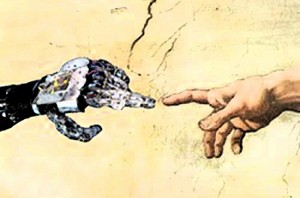Towards a Theory of Architecture Machine:
Author: Nicholas Negroponte (March 1969)
The author describes machine in which he calls the “Architecture Machine” that can learn about architecture and possibly learn about learning about architecture. A machine that can associate courses with goals, to be self-improving evolutionary specie and to be ethical. Nicholas also outlines the rational in the partnership “dialogue” of an architect in which he calls the “teacher” with the machine.
Nicholas describes the computer-aided design studies in the 1960’s as irrelevant in as much as they only present more fashionable and faster (though rarely cheaper) ways of doing what designers already do. His description of the machine and his writing apparently came after analyzing how computer aided design did not reflect effectively on the construction sector, thus a better system or a machine should be present, to aid designers and architects to bring their ideas to life with less hassle, hence boosting the productivity of the designer, without compromising his creativity. Devices that can intelligently respond to the tiny, individual, constantly changing bits of information that reflect the identity of each urbanite as well as the coherence of the city.
The learning machine:
A robot constructed with regenerative loops of a certain formal character is capable of deducting any legitimate conclusion from a finite set of premises. One approach to such a faculty is to increase the probability of meaningfulness of the design, generated from random or disorderly criteria.
Five subassemblies form the architectural machine:
1) A Heuristic Mechanism
A heuristic is a method or strategies based on rule of thumb which basically limit the search for a solution for upcoming architecture problems. The benefit is in time and in the reduction of search for alternatives. Heuristic learning is particularly relevant to evolutionary machines, since it lends itself to personalization and change via talking to one specific designer or overviewing many designers. In architecture machine, this heuristic element would probably be void of specific commitment when the package arrived at your office. Through architect- sponsored maturation, a resident mechanism would acquire broad rules to handle the exceptional information. The first time a problem is encountered, the machine would attempt to apply procedures relevant to apparently similar problems (or contexts). heuristics gained from analogous situations would be the machines first source of contribution to the solution of a new problem.
2) A Rote Apparatus
After repeated encounters, a rote apparatus would take charge. Rote learning is the elementary storing of an event or a basic part of an event and associating it with a response. When a sitatuin is repeatedly encountered, a rote mechanism can retain the circumstance for usage when similar situations are next encountered. In architecture, such repition of subproblems is extremely frequent: parking, elevators, plymbing, etc. Again, a rote mechanism lends itself to personalization. But, unlike the heuristic mechanism, this device would probably arrive originally with a small repertoire of situations it can readily handle.
3) A Conditioning Device
A conditioning mechanism is a device that handles all the non-exceptional information. Habits assist humans to surpass daily obstacles. In machine, beyond rote learning, design habits can respond to the standard events generated by the problem, by the heuristic mechanism or by the rote apparatus. Each robot would developed its own conditioned reflexes. The presence of habitual events will trigger predefined responses with little effort until the prediction fails; whereupon the response is faded out by evolution and is handles elsewhere in the system.
4) A Reward Selector
A reward selector initiates no activites. The reward mechanism selects from any action that which the “teacher” likes. The teacher (the designer, and overviewing apparatus, the inhabitants) must exhibit happiness or disappointment for the reward mechanism to operate. or to furnish this mechanism with direction, simulation techniques must evolve that implicitly (without the knowledge of the designer) test any environment. The design of this device is crucial; bad architecture could escalate as wasily as good design. A reward selector must not make a machine the minion or boot licker of bad design. It probably must evaluate, or at least observe, goals as well as results.
5) A Forgetting Convenience
“Unlearning is as important as learning”. Information can assume less significance over time and eventually disappear (exponential forgetting). Obsolescence occurs over time or through irrelevance . A technological innovation in the construction industry, for example, can make entire bodies of knowledge obsolete. Or past procedures might not satisfy environmental conditions that have changed over time, thus invalidating a heuristic, rote response, or conditioned reflex.
The Seeing Machine:
The seeing machine can respond to stimuli. Such a machine can “see, hear and sense” its surroundings by repetition and recognition.
Conclusion:
Whats interesting about this paper is that its way ahead of its time. I find it intriguing that the author can describe todays “architecture machines” in the clear way that he did. I can strongly relate the learning machine to Building Information Modeling software and hardware present currently in the construction industry. A machine that can adapt to fit the designers need. A self- improving machine that can be programmed to recognize errors, recall styles, respond to environmental factors, gather data from other designers etc. And can be moulded or custom made to act as the designer’s “partner”.

